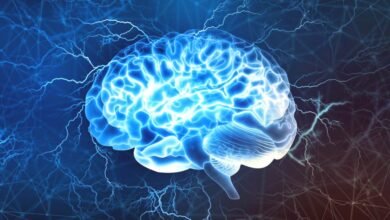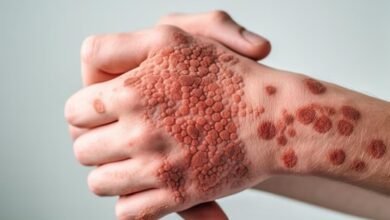Eating Chocolate for Breakfast Improves Your Creativity and Focus

I’m a brain coach, brain nutritionist, brain performance, and brain productivity specialist who helps my clients achieve “the zone” by facilitating focus, attention, creativity, inspiration, drive, and flow states of mind. The zone when we lose sight of time and accomplish our finest work, provide our greatest outcomes, and have a much better chance of creating world-changing inventions for which we will be remembered for years.
Most individuals aren’t aware that any mental state, such as flow or terror, has biochemical and brain-chemical “signatures.”
In any of the mental states we experience, specific chemicals circulate in our brain and blood.
What’s the best part? Nutrition, lifestyle, environment, and behavior can all influence the circulating molecules.
Chocolate in your mind
The flow state has a molecular signature that is manifested in five important brain chemicals: norepinephrine, dopamine, anandamide, serotonin, and endorphins. Our brain is bombarded with these flow hormones every time we enter this zone of wonder, when aha moments happen at a far higher rate.
Chocolate is one of the only foods that activates all five flow chemicals in the brain. Chocolate either contains the building blocks for these chemicals, or it causes our brain to produce more of them as a result of the hundreds of phytochemicals it contains, or chocolate compounds help flow chemicals stay in the brain for longer — all of the flow-boosting effects chocolate produces are still unknown.
Apart from black truffles, chocolate is one of the richest sources of anandamide, dubbed the “pleasure molecule” by experts. When we are in flow states, our brain produces a lot of anandamide. We can actively increase levels of this pleasure molecule by eating chocolate in the form of chocolate bars, hot chocolate, cacao, and other forms. Anandamide doesn’t have a long “brain life” of activity; it evaporates rapidly. Chocolate provides components that help happiness last longer.
By the way, anandamide binds to the same receptors as the active chemicals in marijuana. The endocannabinoid system, which reduces anxiety, helps our body and mind cope with stress, and promotes sensations of contentment and pleasure, has receptors that are located not just in the brain but throughout our entire body. Anandamide has an impact on our memory, sleep, hunger, and pain receptors, among other things.
Increased blood circulation to the brain has been connected to any condition of high performance, greater brain and mental health, cognitive decline prevention, memory creation, and learning capacities.
Related: 3 Best Ways to Improve Your Energy and Your Work
Productivity and chocolate
While many entrepreneurs, high performers, CEOs, and inventive leaders are recognized for researching nootropics and smart pharmacological substances to improve their cognitive abilities, few are known for their love of chocolate. It strikes me as a delightful oversight.
The majority of nootropics and brain-enhancing drugs on the market are a miss. People who use medications for ADHD, cognitive fog, diversions, and anxiety experience major adverse effects. Despite this, chocolate, a psychoactive drug with a demonstrated brain-enhancing effect, has mostly been overlooked. I attribute some of this to the candy industry, which has stripped genuine chocolate of its brain-boosting properties.
In certain studies, Chocolate has been demonstrated to have considerable favorable impacts on a variety of brain states, brain health parameters, cognitive performance, memory, learning, cognitive decline prevention, and boosting gut health as a prebiotic ingredient.
The type of chocolate that provides the most benefits is 75-85% cacao bars; the higher the proportion, the better. The minimal cacao content for something to be classified chocolate in the United States is 10%; in the EU, it’s 25%; and in the United Kingdom, it’s 20-24%. (for milk chocolate). Cacao beans are expensive, thus many candy makers aim to reduce the cost of the product by using less of them. Because of the sugar and other non-food ingredients, it is a brain disaster rather than a brain booster.
Related: Workplace Wellness: 9 Ways for Employees to Stay Healthy
Chocolate flow recipe
I went to my “cacao dealer,” a local coffee/chocolate store in Playa Del Carmen, Mexico, to get my flow fix — a 10-ounce, 100 percent cacao bar — when I ran out of chocolate this morning. I normally get 10 days out of this bar. I eat half an ounce of chocolate around 30 minutes before starting my writing session. I consume the same quantity about one hour into my writing to finish strong.
I also eat chocolate before any activity that demands me to be creative, productive, collaborative, open-minded, or flexible, such as putting together a presentation pitch, discussing brand development strategies, researching new ways to give coaching, or even going to a dance class. I also consume a piece of dark chocolate before Spanish class because chocolate aids memory and learning.
Related: 3 Important Supplement and Wellness Trends
A chocolate booster for your next team’s brainstorming session
Because of the aforementioned history and research data, I always propose integrating dark chocolate in the process when helping firms develop a better brainstorming experience and increase the culture of creativity.
Place some dark chocolate at the entrance of a location dedicated to group brainstorming or invention activities, along with a poster about its cognitive advantages. Are you having a Zoom session with your team to solve problems? Consider delivering dark chocolate to everyone and collectively microdosing before the meeting.
A few years ago, I volunteered for one of Seth Godin’s events in NYC. I noticed Godin looking exhausted during one of the breaks near the end – speaking for hours at any interactive event or class can be mentally demanding. I had a 100% dark chocolate bar with me at the time, so I presented it to him. “Just what I needed,” he said, joyfully devouring half of a two-ounce bar on the spot.
What you do with this information is entirely up to you: You can dismiss it, refuse to believe it, and dismiss it as unimportant, or you can try something that people have done for thousands of years. See what happens when you try it out.
A group of substances circulating in our brain at any given time condition any mental state. You may either wait for “fortunate” moments when chemical ingredients “naturally” combine to produce the elusive state of flow we all desire, or you can plan for it. Do we really need another excuse to consume more chocolate?








One Comment